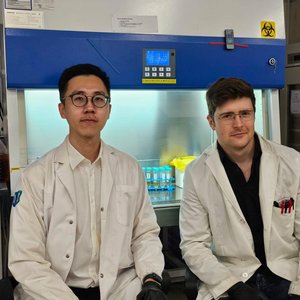The Illinois Soybean Association checkoff program funded the feed research by Ichthus Unlimited to test various soy-based diets for use in tuna farming and ranching.
“The successful research results should help provide permanence to tuna aquaculture, and can become the platform upon which commercially manufactured tuna feeds can now be developed,” said Buentello.
Tuna is one of the most sought after seafood consumed worldwide, resulting in such overfishing that various wild tuna species are fully- or over-exploited, with the Southern Atlantic Bluefin considered Critically Endangered.
“Closed cycle cultivation of tuna aquaculture, from hatch to harvest, combined with sustainable formulated grow out diets offer the best opportunity we have to prevent the depletion of wild tuna stocks while supplying the global market demand for these species,” said Buentello.
In the past decade, much progress was made in developing hatchery technology to produce tuna from eggs for closed-cycle cultivation. Despite these efforts, most “farmed” tuna today are actually ranched – caught as juveniles in the wild, and fattened up in ocean pens to market size. A major impediment to sustainable tuna aquaculture is the large quantity of wild-caught baitfish required to feed tuna during the grow-out period.
The research tested various soy-based diets for larval Atlantic Bluefin tuna in Spain and for juvenile yellowfin tuna in land-based facilities in Panama. Building on these experiences, a diet was successfully tested on ranched Pacific Bluefin tuna in ocean net pens off the northwest coast of Mexico. Bluefin are normally fed wild-caught sardines, with a measured feed conversion ratio (FCR) of 28:1. The new formulated diet decreases the FCR to 4:1, and decreases the amount of fishmeal and fish oil in feed by tenfold.
The new diet is also significantly better for the environment, as the floating feed can be better monitored and uneaten feed can be retrieved. It’s nutritionally dense, requiring less volume, and is projected to be almost twice as economical as baitfish. The diet is avidly consumed by the tuna and made from sustainable, renewable ingredients.
Companies that contributed raw materials towards the successful completion of this project include Archer Daniels Midland, Tyson, Omega Protein, Midwest Ag Enterprises, Krill Canada, APC and Originates. ADM also contributed blending facilities and other resources.
Mark Albertson of the Illinois Soybean Association said that Illinois farmers have long been supporters of sustainable aquaculture, and this project is a classic example of farmers helping farmers.
“This feed breakthrough is a significant step towards closed cycle cultivation of tuna species, which will ease pressure on threatened wild tuna populations,” said Albertson. “We are eager to see this work continue to both uncouple tuna ranching from the dependence on wild-caught baitfish, and open the door for truly sustainable hatch-to-harvest tuna farming.”
For more information, contact feedingtuna@ilsoy.org










